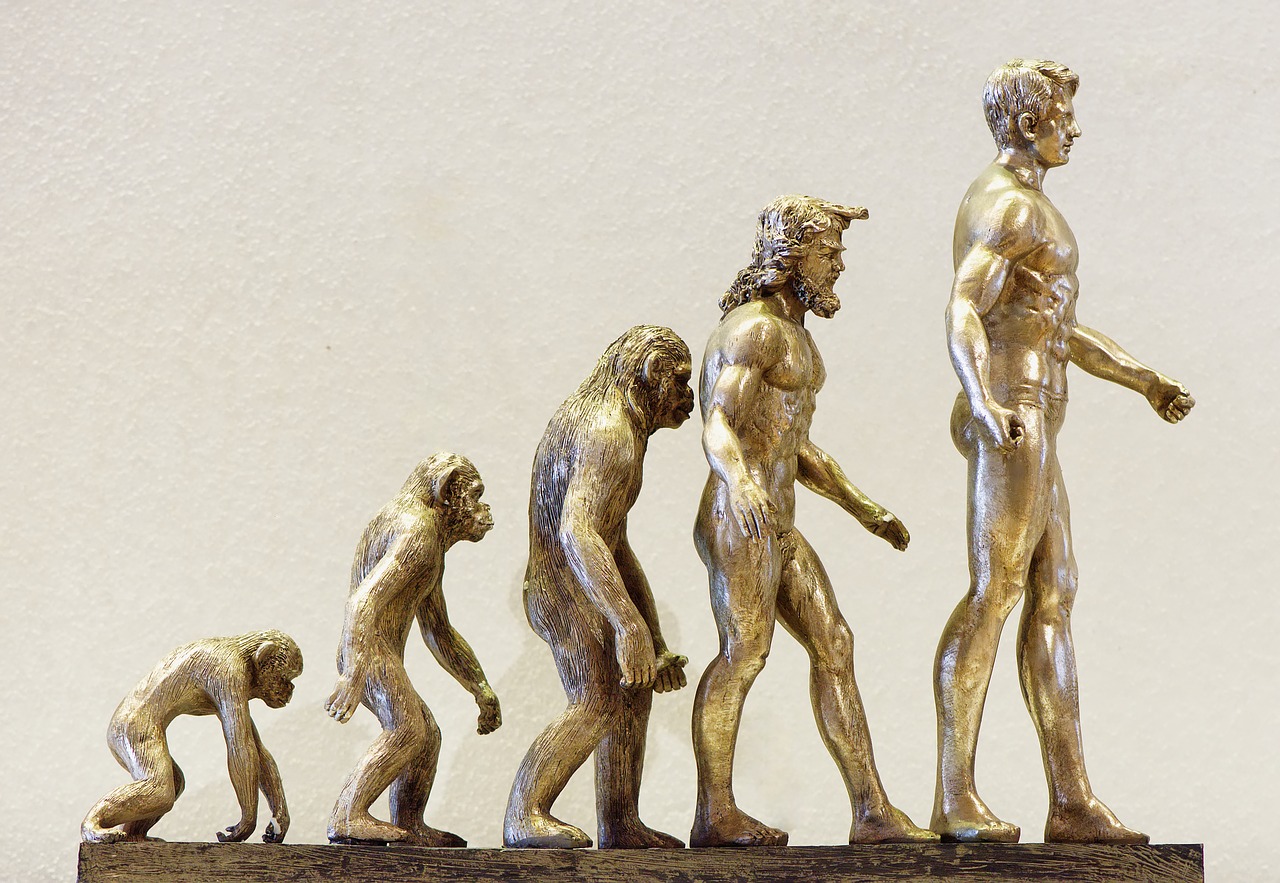
One question that unites all members of the human race is, “Where did we come from?” Historically, we as a species have addressed this question using origin stories and mythologies, but we can also turn to the fossil record for a scientific answer.
The fossil record houses a number of ancient human species known as hominins. Hominins are defined as all the species that fall on the human side after ancient chimpanzees and humans split from their common ancestor about six to seven million years ago. Therefore, hominins include both ancient species that directly led to our species today, Homo sapiens, as well as side branches that eventually went extinct, like the famous “Nutcracker Man,” Paranthropus boisei.
There are multiple ways researchers of human evolution can address the question, “Where did we come from?” We can look for the ancestral species that gave rise to (1) Homo sapiens, (2) the genus Homo, or even (3) all hominins. The second question has generated much debate among researchers, and there are currently at least five candidates for the ancestral species of the genus Homo.
Knowing who the true ancestor of Homo is can tell us the who, what, where, when, and how of our genus’ origination. For example, if Homo arose from Australopithecus afarensis, whose fossils are found in eastern Africa, then it is likely our genus originated in that region. If instead, Homo speciated from Australopithecus africanus, then our genus probably first appeared in southern Africa. Therefore, it is of utmost importance that we are able to rule out candidate species and figure out which one is the most likely ancestor of Homo.
One candidate, Australopithecus sediba, has received a lot of attention within the past decade, so it is important that we offer a strong test of its proposed ancestry to Homo. Our recent paper generated such a test by analyzing the ages of fossils from A. sediba and the earliest, currently unnamed, species of Homo. Fossils from A. sediba are all dated to two million years ago, and the one fossil from the earliest species of Homo (a jawbone) is dated to 2.8 million years ago. This is a unique case where the age of the proposed ancestor is younger than the age of the proposed descendant. Is such a scenario possible?
This chronological pattern is indeed possible if the descendant speciated from the ancestor, such that their species could coexist through time. As an analogy, imagine we have a mother (the ancestor), a daughter (the descendant), and photographs of their lives through time (the fossils). The mother gives birth to the daughter, and the two obviously coexist through time. Now imagine that we have a photograph of the mother taken at a date after a photograph of the daughter (for example, a photograph of the mother’s 90th birthday and a photograph of the daughter’s first birthday). This scenario is entirely plausible and mirrors the plausibility of finding an ancestor’s fossil that is younger than its descendant’s.
Instead of asking whether it is possible for an ancestor’s fossil to postdate its descendant’s, a more informative question would be to ask how likely this chronological pattern is. A. sediba (the proposed ancestor) is 800,000 years younger than earliest Homo (the proposed descendant), and it has recently been shown that the average lifespan of a hominin species is about one million years. My coauthor and I created a mathematical model which assumed A. sediba is ancestral to Homo, and from this model, we calculated the probability of finding A. sediba fossils that were at least 800,000 years younger than earliest Homo. The resulting probability is extremely low (about 0.09% on average), and because we do actually find A. sediba fossils that postdate the earliest Homo by 800,000 years, this suggests our model’s assumption (that A. sediba is ancestral to Homo) is wrong and can be rejected.
We corroborated our model results by analyzing the historical record of hominin species discovery to see how often fossils from a proposed ancestor postdated fossils from a proposed descendant. Out of 28 hominin ancestor-descendant pairs, in only one case did a fossil from the ancestor postdate that from the descendant, and the age difference between these fossils (100,000 years) was much less than the age difference between A. sediba and earliest Homo (800,000 years). This suggests that A. sediba is not actually ancestral to Homo, thus supporting our mathematical modeling results.
My coauthor and I concluded our paper by stating that the hypothesis of A. sediba being ancestral to Homo can be falsified. Based on the remaining candidate ancestral species, we believe A. afarensis represents the most likely candidate based on previous research, but it is still possible that the true ancestor has not been discovered yet. Either way, our findings move us much closer to knowing who the ancestral species of Homo is and offer a scientific answer to the question that intrigues us all, “Where did we come from?”
These findings are described in the article entitled Temporal evidence shows Australopithecus sediba is unlikely to be the ancestor of Homo, recently published in the journal Science Advances.









